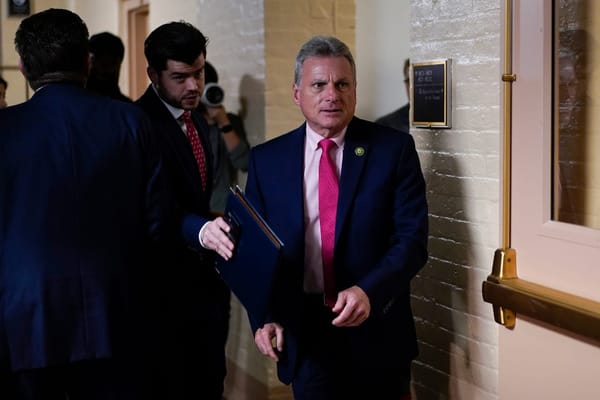U.S. Broadband Coalition Releases Report on Broadband Strategy, Bringing 160 Organizations Together
WASHINGTON, September 24, 2009 – A national broadband strategy must take steps to stimulate adoption and use of technology at a variety of levels, said a report by the U.S. Broadband Coalition, which presented the report at the Federal Communications Commission on Thursday.
Andrew Feinberg
WASHINGTON, September 24, 2009 – A national broadband strategy must take steps to stimulate adoption and use of technology at a variety of levels, said a report by the U.S. Broadband Coalition, which presented the report at the Federal Communications Commission on Thursday.
The coalition, a non-profit organization made up of more than 160 organizations that provide or depend on broadband services, came together to push for a national broadband plan in mid-2008.
The release of the group’s report is the culmination of 18 months of work that predates the passage of the American Reinvestment and Recovery Act when the coalition issued a “call to action” to organize and create a national broadband strategy.
FCC broadband czar Blair Levin welcomed the group’s comprehensive report. Facts needed for the commission to construct a national broadband plan are “not in the record…and not at the FCC,” he said.
If the government is to invest in broadband, there must be a “level of clarity…a level of certainty…about those facts,” Levin cautioned. And when it comes to data and facts, the FCC needs help gathering facts to fulfill its charge from Congress, he said: “I have to tell you, we don’t have that.”
Keeping the group focused was like “herding cats,” said coalition president Jim Baller. Many members didn’t believe a national strategy was needed, he said. “We weren’t clear about what the arguments were,” he said, and parties were often “shouting past each other.”
But the group managed to stick together by following one rule, he said: “Check your sound bites at the door.”
When cooler heads prevailed, Baller said they found they could agree that a strategy of some kind was needed. “We had a basis for pulling ourselves together,” he said. And the passage of the American Reinvestment and Recovery Act “gave our work added relevance,” he said.
Bridging the “digital divide” is a major barrier to universal broadband within the U.S., the report said. Among the issues affecting adoption include a lack of relevance to many communities, difficulty accessing training and technology literacy programs, and a dearth of affordable options for access to computers.
Further, people with disabilities “often experience barriers of physical accessibility” to high speed internet as well as computing technology in general. While not endorsing any specific proposals, the coalition recommends the national broadband plan include research into increasing accessibility for Americans with disabilities.
Standards for basic computer knowledge must be raised among all groups in order to increase adoption. “Accelerating Internet learning requires innovation and improvement in usability, including the development of more natural and robust interfaces and making networks easier to set up and maintain,” the report said. “Raising the bar on skills and increasing ease of use benefits everyone.”
In addition to increasing adoption of broadband, service availability must also be addressed by federal collaboration with state and local governments, the report said. The coalition identified two major barriers to broadband deployment: high costs and technological barriers. But these can be overcome by a number of policy prescriptions, the report said, including grants, loans, loan guarantees, tax incentives, and tax credit bonds. But the coalition would not endorse, nor would it decline to endorse plans to harness the Universal Service Fund to such an end.
With more than fifty policy options included, the report represents a “tall order,” said Benton Foundation president Charles Benton. But there is no more important debate than the national broadband strategy when it comes to the economic future of the country, he said. Benton called for transparency and cooperation in collecting needed data for a national plan as well as implementing it: “Policy should be driven by consumer needs as well as industry,” he said.
The process of creating the report allowed a diverse range of views to be aired, said Verizon Communications vice president Link Hoewing. “Learning about the views of such a wide array of people was important,” he said. But a further challenge to the group remains in its forthcoming report on broadband adoption and use, which will be released in November. “We’ve got a lot of work to do.”
Resources
Editor’s Note: Broadband Census Data LLC participated in the U.S. Broadband Coalition, and Executive Director Drew Clark is Co-Chair of the Coalition’s Metrics Working Group.
About BroadbandCensus.com
BroadbandCensus.com was launched in January 2008, and uses “crowdsourcing” to collect the Broadband SPARC: Speeds, Prices, Availability, Reliability and Competition. The news on BroadbandCensus.com is produced by Broadband Census News LLC, a subsidiary of Broadband Census LLC that was created in July 2009.
A recent split of operations helps to clarify the mission of BroadbandCensus.com. Broadband Census Data LLC offers commercial broadband verification services to cities, states, carriers and broadband users. Created in July 2009, Broadband Census Data LLC produced a joint application in the NTIA’s Broadband Technology Opportunities Program with Virginia Tech’s eCorridors Program. In August 2009, BroadbandCensus.com released a beta map of Columbia, South Carolina, in partnership with Benedict-Allen Community Development Corporation.
Broadband Census News LLC offers daily and weekly reporting, as well as the Broadband Breakfast Club. The Broadband Breakfast Club has been inviting top experts and policy-makers to share breakfast and perspectives on broadband technology and internet policy since October 2008. Both Broadband Census News LLC and Broadband Census Data LLC are subsidiaries of Broadband Census LLC, and are organized in the Commonwealth of Virginia. About BroadbandCensus.com.










Member discussion